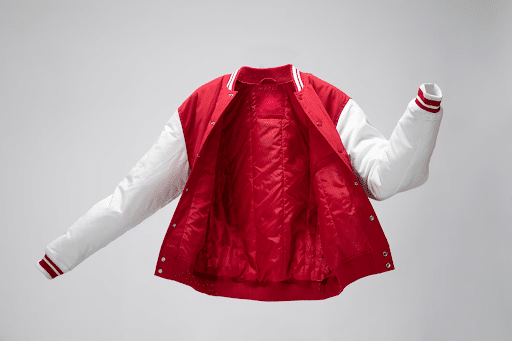Table of Contents
Imagine leaving your home in the morning unaware of how the weather may change but knowing for certain that you are dressed to adapt and maintain a comfortable body temperature. This is exactly what weather-adaptive clothing technologies offer, which have transformed both casual wear and specialised garments. Just like making a bet on your favourite betting app, these clothes make themselves appropriate for any climate around, providing matchless comfort and functionality.
Weather-Adaptive Clothing Evolution
The journey of weather-adaptive clothing started centuries ago with rudimentary innovations such as waterproof cloaks and insulated layers. Technology has evolved over time, so have our clothes. By the late 20th century, significant strides were made through the introduction of materials such as Gore-Tex, combining breathability with water resistance.
Today we have smart textiles with sensors for sensing and responding fabrics leading to changes in dress codes depending on weather patterns among other factors. These improvements represent an ongoing progression towards comfort and performance in changing climatic conditions.

Core Technologies in Adaptive Clothing
At the core of weather-adaptive clothing are several major technologies that enable their adjustment:
- Smart textiles: Materials containing sensors that detect changes in the surroundings and cause corresponding modifications in the properties of the fabric.
- Phase Change Materials (PCMs): These are substances included in fabrics to take up, hold, and give off heat to regulate body temperatures.
- Waterproof/water-resistant fabrics: These are materials created to either deter water or take it up for comfort and protection purposes.
Among others, these technologies make it possible for clothes to adapt smoothly irrespective of whether you are experiencing rain, sun, or snow. More sophisticated adaptive garments would appear as research goes on, thus ensuring that people remain comfortable regardless of environmental conditions.
The impact of material science on adaptive clothing
Material science has efficiently and flexibly improved weather-adaptive clothing. Modern adaptive clothes use advanced fabrics that understand their surrounding environment, thereby improving comfort and enhancing functionality.
Phase Change Materials (PCMs)
Phase change materials are a new textile technology. These can absorb, hold, and release heat, which makes them ideal for regulating temperature in fabrics. When the temperature is high, PCMs absorb unwanted heat to keep the body cool. When it is low, they let out previously stored heat to warm up the body.
For all-weather garments, PCMs are useful in thermoregulation for consistent comfort regardless of external conditions. These PCMs were first developed for spacesuits but are used today in various everyday clothes for more sophisticated control of thermal energy transfer by outdoor enthusiasts and athletes.
Hydrophobic and Hydrophilic Fabrics
Textiles, which can either repel or attract water, are very important in moisture control. Hydrophobic materials reject water; for this reason, they are commonly used in making raincoats and gear aimed at staying dry during wet weather. They do not allow water to pass through them, thus ensuring that the user remains dry. Conversely, hygroscopic textiles absorb liquid and take it far from the body, improving its breathability and convenience.
Dual functionality is especially appropriate in sportswear where perspiration management as well as external issues of moisture are critical. Manufacturers of clothes mix these fabrics to make clothes that adapt to different levels of dampness and ensure optimal performance in various climatic conditions.
Market Trends and Consumer Demand
Presently, the market for climate-adaptive clothing is experiencing substantial growth due to rising consumer interest in adaptable and high-performance wear. These major trends include:
- Rising demand for versatility: Consumers are currently seeking clothes that can adapt to different weather conditions, which will reduce the need for multiple ones.
- Sustainability focus: Consumers are starting to value ecologically friendly materials and environmentally friendly manufacturing processes.
- Technological integration: Smart textiles and wearable technology are growing popular with features like temperature control and moisture management, among others.
- Outdoor and sportswear boom: The demand for adaptive clothing has increased significantly following a rise in the popularity of outdoor and sporting activities.
These trends paint a picture of a dynamic market where wearers determine how adaptive technologies are developed in relation to their preferences.

Future Directions in Adaptive Clothing Technologies
What lies ahead in the future of adaptive clothing technologies is a lot more innovative breakthroughs. There is exploration by researchers in the application of nanotechnology in the development of microscopic environmental-responsive fabrics. In essence, this might result in lighter and stronger clothes capable of reacting better.
Additionally, improvements in artificial intelligence could mean that smart textiles would be able to anticipate weather changes and adjust themselves accordingly to offer an unprecedented level of comfort and security. The adaptive clothing industry, through ongoing research and development efforts, will change how we interact with our environment, thereby making life more manageable and enjoyable on a daily basis.
Final Words
Weather-adaptive clothes are changing our dress sense by providing a perfect combination of comfort, functional improvement, and innovation. They also make us ready for different environments throughout the day. For example, there are those who go to work in the morning when it is cool, but when they leave work in the evening, it is hot. The future looks even more amazing with the numerous developments in store, which will enhance their clothing experience even further.
Image Source – Freepik
